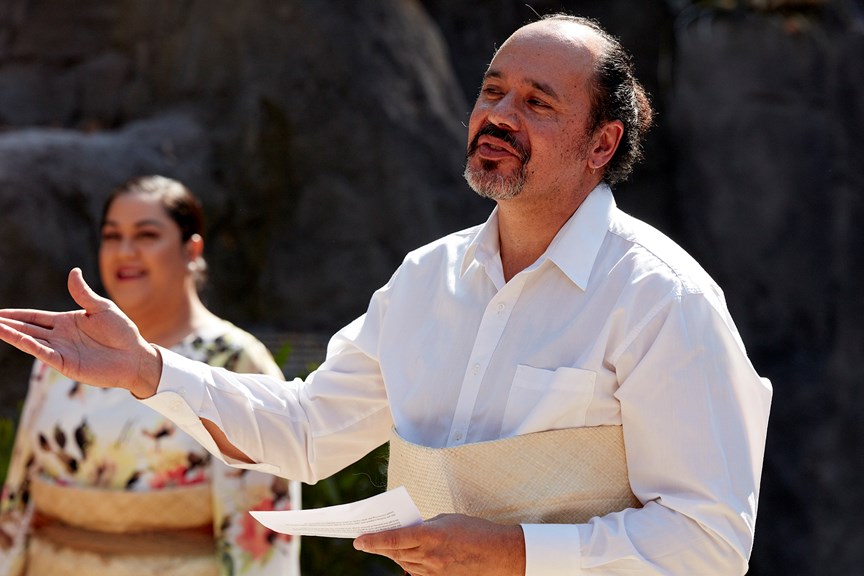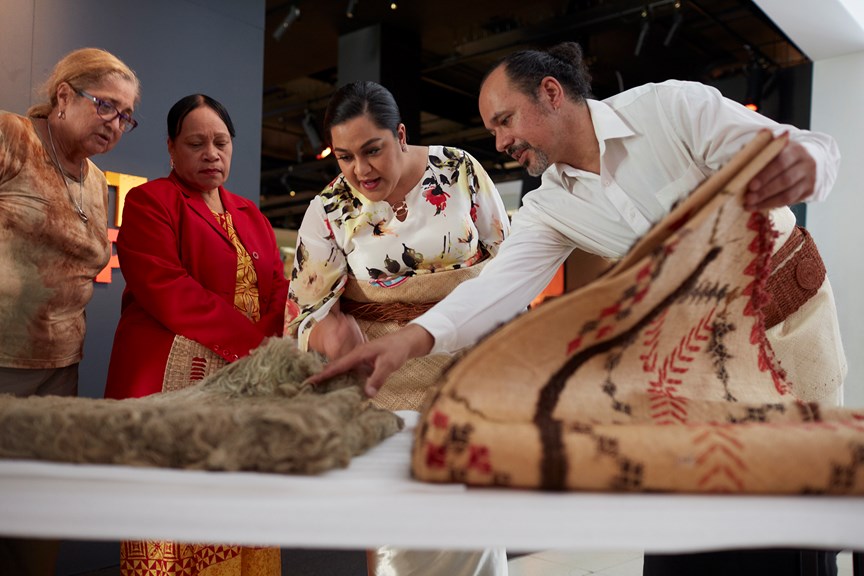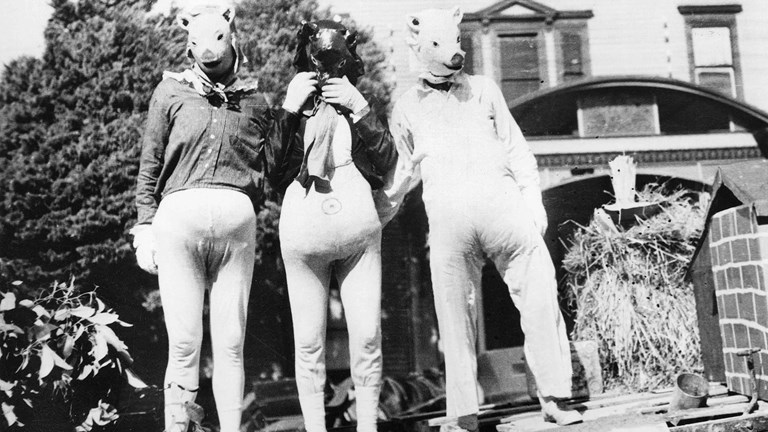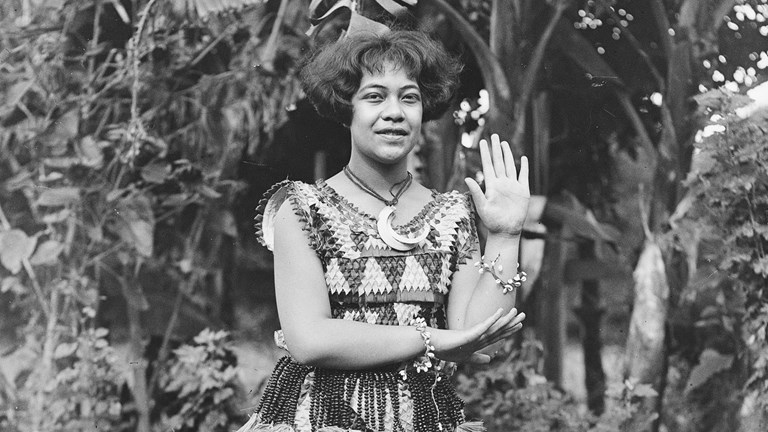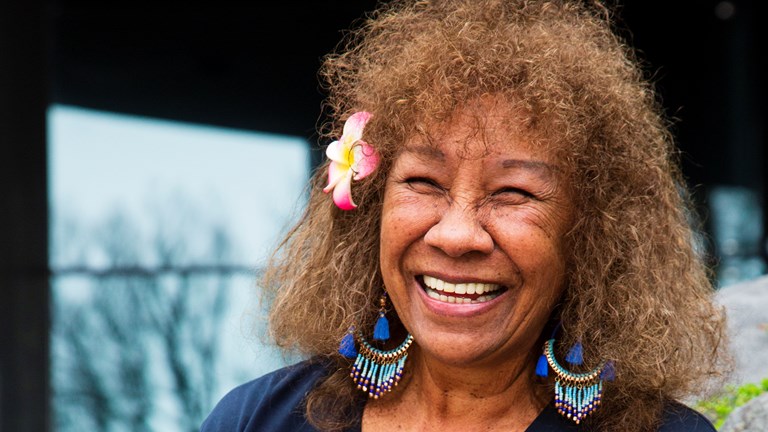A pathway for First Nations identity and meaning in the GLAM sector
Si’oto’ofa mo Wominjeka
Ko hoku hingoa ko Sione Napi Francis
Ko eku ha’u mei Tonga mo Aotearoa mo Narm
Oku ou lo mahino tui tangata fonua Boon Wurrang
Oku ou faka’api’api tui tangata fonua Boon Wurrung mo fanau Kilin
Oku ou faka’api’api fanau First Peoples mo First Nations tangata fonua
Oku ou faka’apa’apa pule’anga fakatu’l mo tangata fonua
Oku tau ikai faaafe’e kau a’ahi
I start this conversation with an offer of greetings with ofa or love to you the reader. This creates a cultural space where we can converse: talanoa. This is also about respectful reciprocal space or VA and a moment in time that begins and ends with the reading of this article. Importantly I then use the Kulin Nation word for welcome; Wominjeka to demonstrate my shared understanding of being on Boon Wurrung country and what this means through language.
I then present my name and where I was born. This provides you with my whakapapa or connection to my countries of origin and affiliation; Tonga / Aotearoa / Narrm Melbourne. Respecting the names of those who you work with is very important as this goes back through the generations to country and ancestors.
Finally I offer my respect and understanding to the customary owners and knowledge holders of the unceded land on which we live. This gives me my place to stand as a guest on unceded land and the context by which I am able to work in the GLAM sector and write this article.
The use of the Tongan language shows a deep respect for my family and countries of connection and also the country I live on. Words are rooted in the land and the land and the people are one; fonua. This is a very important concept that permeates through collections of words, objects and things that represent knowledge, or ancestral knowledge and connection.
The introductory statement represents my journey of the last fifty years. I can now stand up and say I am a Tongan Australian affiliated with Aotearoa on sovereign Boon Worrung country and bring my history and connections with me. I was lucky to have my partner, parents, families and broader communities to support me as well as my colleagues and workplace. This has only been a recent development in the cultural sector for me after thirty years in the industry; firstly as an artist then volunteer, installer, relocation officer, collection manager and now curator. There is now a space for dialogue and support for First Peoples voices in the GLAM sector and wider community.
I believe galleries, libraries, archives and museums are powerful places and can really change minds, hearts and dialogues. Important questions of relevance, compliance, academic rigour, market share, reach, staffing, collecting, exhibitions and budget restraints must be underpinned by acknowledgement of country and who we serve and the values we live by. Beginning the dialogue with willingness, humility and openness. These values create space for dialogues and pathways for First Peoples.
Why do this? We are still standing on the foundation of Terra Nullius, the deceptive and all pervasive foundation of colonisation in our region. This still binds us and underpins the work we do. I do not want to talk on behalf of the traditional custodians but there are many stories on the land you are standing right now; of resilience, war, removal and massacres in living memory. How can we, the people of the store houses of knowledge, science, education and keeping places for the current and future generations not look at this and build a framework to understand this from all perspectives?
For me all things are distilled and represented in ancestral belongings in source communities and the collections contained within our cultural institutions. Knowledge, songs, dances, stories, language, words, images, recordings, specimens and objects contain the power of connection and spirit that sits beside and is embedded in academic knowledge in our institutions. How do we engage with communities and open our doors to co-development and co-curating to link song lines back to source communities and find commonality in our human stories?
My late Aunty Nanuma, a Tongan customary knowledge holder, visited Museums Victoria's Pacific Collection Store in March of this year. She was a maker of many koloa, cultural treasures and had an amazing understanding of weaving forms and motifs. She said this was the best day of her life. A small group of Tongan community, myself and colleagues were blessed to guide her through the Museums' Pacific Collections. This visit to the collections enabled living cultural connection of collections to communities through acknowledgement, providing access and deep listening.
How do we start to engage wider communities? The beginning of this process is empathetic cultural awareness and cultural safety: for First Peoples and Nations. Cultural awareness is about being aware of differences in the interaction and understanding of history, ethics, relational spaces, family, country and connection. Cultural safety is about understanding and sensitivity in all contexts. Opening up the space to this and asking for help and then listening, opens up a pathway for change.
In April this year the Honourable Princess Salote Maumautaimi Tuku'aho of Tonga visited Melbourne Museum's First Peoples and Te Pasifika exhibitions. This was led by Wurundjeri Elder Auntie Joy Wandin Murphy and included First Peoples, Pacific communities, Melbourne Museum CEO Lynley Marshall and Melbourne Museum staff.
I am wearing a ta'ovala, customary dress and kafa, sinnet belt made for me by Auntie Nanuma that shows respect to Auntie Joy and specifically Princess Salote. This showcases a new approach of community consultation, inclusion and sharing. We are looking outward with open hearts to include customary knowledge holders and be guided by the Elders and protocols of the First Peoples of the land on which we work.
Know who you are, where you live and who you serve. Positionality is key to how we all engage with our communities, our histories. To bring our peoples with us we must provide acknowledgement and cultural safe spaces. Our GLAM spaces must be a place for all generations and peoples communicating stories and truths. Through acknowledgement, employment, co-collecting and developing we can ultimately move forward through respect, love and understanding.
Fakakoloa Australia 'aki e Loto'iTonga
I would like to conclude this conversation with a wish to enrich, Fakakoloa, what it is to be Australian with the spirit of Tonga. Loto means the heart and spirit of affection. It also means authority and reflection. It is a wish that our collective positive beliefs, values and aspirations are for the benefit of all of us.
This article is dedicated to Auntie Nanuma Finau, your strength, knowledge and humour will always be with us, rest in peace.
This article was originally published in the Australian Society of Archivist's July 2018 newsletter.
